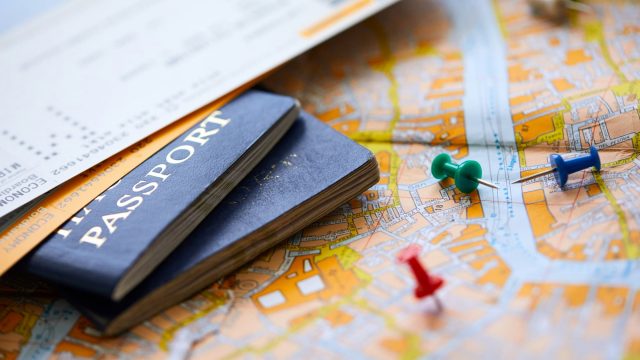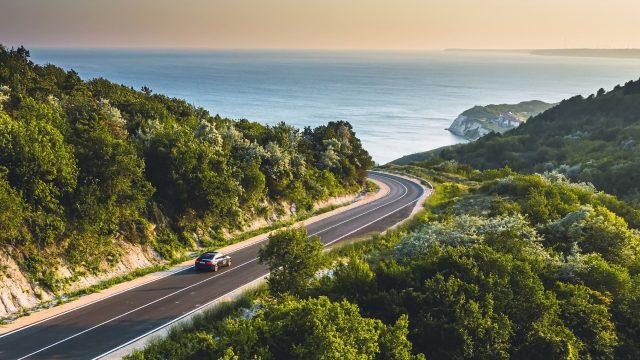This year, America will see its first solar eclipse in 26 years, so what better time to raise our eyes to the skies and appreciate the stunning views above us? There are many locations designated as “dark skies” areas; limited light pollution and clear sky views making the conditions for stargazing perfect. We’ve compiled a list of top locations around the world where you can arm yourself with a telescope and a blanket, head off into the night to see the stars above.
 Photo by: allexxandarx/Adobe Stock
Photo by: allexxandarx/Adobe Stock
America
This year on August 21st experience the event that’s been branded the “Great American Eclipse”. A thin 70-mile band stretching coast to coast from Oregon to South Carolina will be affected, with some areas experiencing complete totality. Do your research and pick a place along the band where the experience will last longest, around 2 minutes 40 seconds. 21 National Parks contain areas that sit along the band and are sure to be honeypots for those wishing to experience the natural phenomenon. Allow extra time if travelling to check out the eclipse as the roads will be packed with like-minded folk. You’ll also need to purchase and wear solar viewing glasses to ensure your eyes are protected from the sun. Book your accommodation as soon as possible as this will be in high demand around the time of the eclipse.
Arizona is home to some great places for stargazers. The Grand Canyon is designated a Dark Sky Park; an area where there’s limited light pollution and uninterrupted skylines. Annual Star Parties are very popular.
Head to the Lowell Observatory in Flagstaff; home of the world’s first International Dark Sky City.
Norway
It won’t come as a surprise that this Scandinavian country has made the list. As one of the places you’re in with a shot of seeing the Aurora Borealis, there are many perfect places here to catch some pretty stars.
Trysil is the largest ski resort and offers the Trysil Stargazing Tour; perfect for seeing the Northern Lights.
Take an Astronomy Voyage with Hurtigruten along the entire Norwegian coastline. Gain a unique insight and further your knowledge about the Arctic sky and the Northern Lights. Hear lectures from experts on astronomy.
Head to Alta to check out the first observatory specifically built in 1899 on Mt Haldde to research and monitor the Northern Lights. It’s this development that has led to the town being nicknamed “The Town of the Northern Lights”.
Tromsø features many highlights for your itinerary, including the Northern Lights Planetarium at Tromsø University and Science Centre, midnight safaris, and visits to Northern Lights camps.
 Northern Lights over Ersfjordbotn in Tromsø, Norway. Photo by: ykumsri/Adobe Stock
Northern Lights over Ersfjordbotn in Tromsø, Norway. Photo by: ykumsri/Adobe Stock
United Kingdom
The Yorkshire Dales National Park has four Dark Sky Discovery Sites with minimal light pollution and great uninterrupted sight lines. Head to Hawes and Malham National Park Centres, Buckden National Park, and Tan Hill Inn which are all open to the public and accessible for all abilities.
The next Dark Skies Festival takes place between 10th-25th February 2018. Take part in cycling, walking or caving at night. Visit a stargazing party where you’ll learn more about the constellations overhead. The event brings together the North York Moors, South Downs and the Yorkshire Dales.
Exmoor National Park was designated Europe’s first International Dark Sky Reserve in 2011; the second in the world to be named. It hosts its own Dark Sky Festival; the next will be between 19th-29th October 2017. Visit astro-parties, attend stargazing evenings, hear from specialists, and learn how to build a rocket. It will also feature the largest mobile planetarium in the world. If you can’t attend during the festival, hire a telescope from Dark Sky Telescope Hire or attend Stargazing Experience Nights.
Canada
In Nova Scotia, the Kejimkujik National Park was designated a Dark Sky Preserve in 2010. Take advantage of the on-site telescope or attend a free talk. Other places which are great for stargazing include Cape Breton Highlands, the Tobeatic Wilderness Area, Wood Buffalo National Park (the world’s largest Dark Sky Preserve) and Jasper National Park.
At Trout Point Lodge, the world’s first certified Starlight Hotel, take guided star walks or use the solar telescope to get a different perspective of the sun. The Lodge is nestled in the Acadian Skies and Mi’kmaq Lands.
Pop along to the Deep Sky Observatory at Quinan for a unique and personal approach to the stars.
 Mount Teide as the sun sets, Tenerife. Photo by: Ingo Bartussek/Adobe Stock
Mount Teide as the sun sets, Tenerife. Photo by: Ingo Bartussek/Adobe Stock
Tenerife
This island probably doesn’t pop into your head immediately when you think of stargazing but climbing Mount Teide on a clear night provides some fantastic sky views. The high altitude and close proximity to the equator allows for some excellent conditions. These are protected by additional laws that have been passed to control flight paths over the island. There are on average 290 days of totally dark skies.
It hosted the first ever semi-annual Starmus Festival where past speakers have included Neil Armstrong and Stephen Hawking.
Check out Dark Skies Tenerife for stay and gaze holidays around Mount Teide National Park, a recognised Starlight Tourist Destination.
Australia
It shouldn’t come as a surprise that this country makes the list. With so much wide-open space with no light pollution, it’s not difficult to find a perfect location to check out the stars.
Head to Coonabarabran (yep, we spelt that right), the nearest town to the Siding Spring Observatory which houses the largest telescope in Australia.
At the Warrumbungle Observatory, hear from resident astronomer Peter Starr (we’re not kidding) and take a look through the 20-inch telescope.
The Australian National University’s base for the Research School of Astronomy and Astrophysics is the Mount Stromlo Observatory. Although there are no working research telescopes here due to bush fires, you can still take a tour of the site on certain days, listen to talks or learn more about the history of the Observatory in the Visitors Centre.
In Canberra, NASAs Deep Space Communication Complex can be found alongside the Canberra Space Centre. Here you’ll find the southern hemispheres largest radio dish.
In the Northern Territory of Australia, Alice Springs is great for stargazing with its lack of light pollution and dry, stable air.
The Sir Thomas Brisbane Planetarium was established in 1978 within the Mount Coot-tha Botanic Gardens. Awe at the 12.5 metre diameter projection dome.
 NASAs Deep Space Communication Complex, Canberra, Australia. Photo by: John Hermann/Adobe Stock
NASAs Deep Space Communication Complex, Canberra, Australia. Photo by: John Hermann/Adobe Stock
Book your hire car to make access to the stars even easier
We think the locations above provide some great opportunities to witness astro phenomenon you might not witness at home. Book your hire car to make access to these sites easy and take advantage of what’s on offer.
Written by Jessica Juby.
Make sure you follow us on Twitter and Facebook for the latest travel tips and news. Remember to sign up to our newsletter below for the latest deals.
Subscribe to our newsletter
Want our blogs emailed direct to you? Sign up below to get updates featuring our blogs and car hire top tips. Receive the best deals on car hire straight to your inbox.





